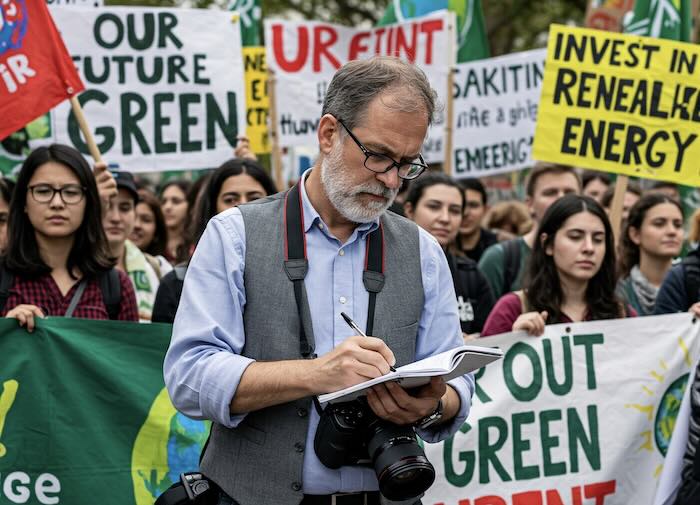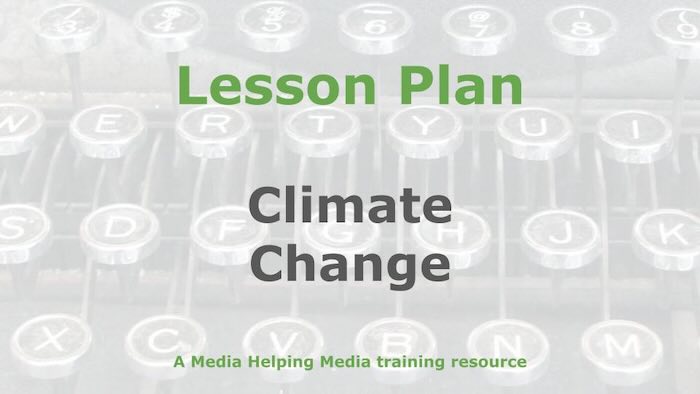
Climate change is a complex and urgent story, demanding careful consideration of tone and language from the journalists covering the issue.
Journalists bear a responsibility for conveying the science, the impacts, alternative views, and the potential solutions of climate change accurately without resorting to alarmism or complacency.
Here’s a guide to navigating this crucial balance:
Prioritise accuracy and nuance:
- Avoid hyperbole and sensationalism: While the stakes are high, exaggerated language can undermine credibility and foster distrust. Stick to verifiable facts and data.
- Acknowledge uncertainty: Science is a process of refinement. When dealing with climate projections, clearly differentiate between established consensus and areas of ongoing research. Use phrases such as “scientists project” or “models suggest” to convey appropriate levels of certainty.
- Define technical terms: Climate science is rife with jargon. Explain terms such as “carbon neutrality,” “RCP scenarios,” and “climate feedback loops” in clear, accessible language. See our Climate change glossary. See our Climate change glossary.
- Represent diverse perspectives: While scientific consensus on the reality and severity of climate change is overwhelming, acknowledge the existence of differing viewpoints within the scientific community and among policymakers. However, avoid false balance by giving undue weight to fringe theories. See our article on ‘False balance and false equivalence’.
Strike a balance between urgency and hope:
- Convey the gravity of the situation: Don’t shy away from reporting on the real and devastating impacts of climate change, from extreme weather events to sea-level rise.
- Highlight solutions and those working for change: Focus on stories of innovation, resilience, and action. Showcase individuals, communities, and organisations working to mitigate and adapt to climate change.
- Frame the story as a collective challenge: Emphasise the shared responsibility of addressing climate change, fostering a sense of community and encouraging collaborative action.
- Avoid apocalyptic language: While the risks are significant, framing the climate crisis as an inevitable apocalypse can lead to apathy and disengagement. Instead, focus on the potential for change and the importance of immediate action.
- Dissenting voices: Journalists need to be aware of dissenting views as to the cause of climate change even if those views are not scientifically valid. Understanding the arguments of deniers can help journalists and the public understand the nature of the opposition to climate action. Presenting denier arguments, in appropriate proportion, can create an opportunity for journalists to fact-check the views presented.
Choose language carefully:
- Move beyond “climate change”: Consider using more specific terms such as “climate crisis,” “climate emergency,” or “global heating” when appropriate, to reflect the urgency of the situation.
- Humanise the story: Focus on the human impacts of climate change, telling the stories of individuals and communities affected by extreme weather events, displacement, and resource scarcity.
- Avoid language that normalises inaction: Phrases such as “business as usual” or “inevitable consequences” can create a sense of fatalism. Instead, emphasise the agency of individuals and institutions to effect change.
- Be mindful of the emotional impact of language: Words such as “catastrophe” or “disaster” can be triggering for some audiences. Consider using more nuanced language that conveys the severity of the situation without causing undue alarm.
- Use respectful language: avoid terms that could be seen as demeaning or othering to those affected by climate change, especially those from vulnerable communities.
Consider your audience:
- Tailor your language and tone to your audience: A scientific journal will require a different approach than a general-interest news outlet.
- Be mindful of cultural and regional differences: Climate change impacts and responses vary across different regions and cultures.
- Avoid alienating your audience: Use language that is inclusive and accessible to a wide range of readers.
In conclusion, reporting on climate change demands a delicate balance. By prioritising accuracy, nuance, and responsible language, and avoiding adverbs and adjectives, journalists can play a crucial role in informing the public, fostering understanding, and inspiring action.
Lesson plan for trainers
If you are a trainer of journalists we have a free lesson plan: Climate Change which you are welcome to download and adapt for your own purposes.









